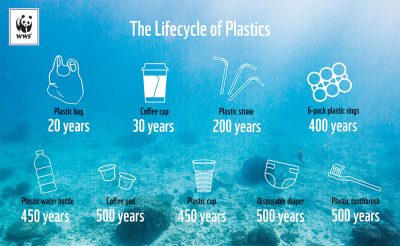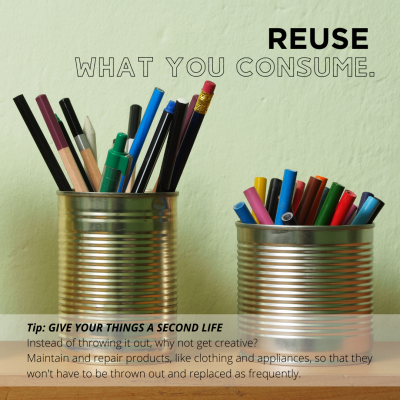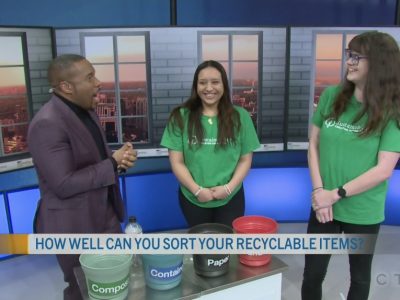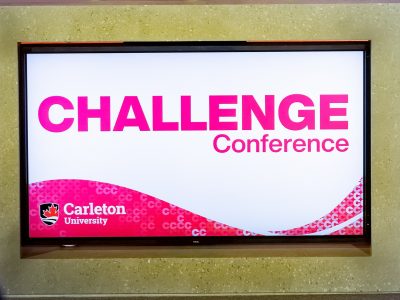What is Plastic-Free July?
Plastic Free July’s goal is to challenge people to reduce our single-use plastics and to encourage sustainable habits every day. Plastic Free July is a personal challenge that is part of a global effort to reduce our overall plastic consumption, creating cleaner campuses, streets, oceans and communities.
What’s the problem?
Plastic has become an integral part of our daily life. No matter what, it seems you cannot avoid it and for many people, it is not something that is a pressing matter. It is easy, convenient, and cheap but at what cost?
- Creating plastic is an oil-intensive process. Most plastics are made from non-renewable petroleum and natural gas resources, which threaten the environment and our oceans. If we can decrease our consumption of plastic, we can also decrease our demand for fossil fuels, both leaving positive impacts on the environment.
-
The world is producing it more than we can handle. Every year 300 million tonnes of plastic is produced. What’s more alarming is that this number is estimated to grow, global waste is expected to grow to 3.40 billion tonnes by 2050.

The lifecycle of plastic (Source: WWF.org)
- Used once, lasts forever. Did you know it takes 10-1,000 years for plastic to degrade? Virtually every piece of plastic that was ever made still exists in some shape or form, excluding the small amount that has been incinerated. Left alone, plastics do not naturally break down, they break up into smaller and smaller pieces until they eventually become known as microplastics. These microplastics are 5 millimetres and are hard to detect, which can make its way out into rivers and oceans, eaten by wildlife and into our food systems.

The Great Pacific garbage patch
- It’s hurting the oceans and the ecosystems within. Every year, 13 million tonnes of plastic enters the sea. The Great Pacific garbage patch, the largest accumulation of ocean plastic in the world, is an estimated 1.6 million square km, an area twice the size of Texas. Plastic debris is the cause of death of one million seabirds and 100,000 marine mammals every year.
- The problem is close to home. Plastic pollution is in our Great Lakes here in Canada, the largest freshwater bodies in the world. In samples collected in Lake Erie, 85 percent of the plastic particles were smaller than two-tenths of an inch, and much of that was microscopic. Fish often mistake these bits of plastic for natural food.
How to get started…
The first step to addressing the problem of plastic pollution is to significantly reduce the amount of plastic we use. Individual choices—and the collective shifts they bring about—add up quickly. Below are tips to ditch the plastic in your life:
- Refuse single-use plastic items. For the first step, you can target takeaway items (the Top 4: bags, bottles, straws and coffee cups/pods).
- Reduce your consumption. Consume less and focus on necessary purchases rather than splurging on things you don’t need.
- Reuse what you consume. Give your things a second life. Switch to sustainable alternatives rather than using disposable items. Instead of throwing it out, why not get creative? Maintain and repair products, like clothing and pasta jars, so that they won’t have to be thrown out and replaced as frequently.
- Recycle what you can’t refuse, reduce, or reuse.
- Rot the rest. Compost what you can such as food waste and compostable items.
- Encourage others! Talk to your family and friends about why it is important to reduce plastic in our lives and the harmful impacts of plastic pollution. Dialogue is an important step to start bringing meaningful change.
Step 1: Taking Inventory
Being plastic-free isn’t about going to buy new things to replace the already plastic items around your home. Things you can start reusing:
- Have a reusable water bottle? Start bringing a reusable water bottle with you on the go.
- Have some reusable grocery bags or plastic ones? Bring your own reusable grocery bag with you to the store.
- Wash and reuse Ziploc/plastic bags.
- Carry your own cutlery with you to say no to plastic cutlery.
- Already have tupperware? Extra glass jars from tomato sauce/ salsa? You can reuse these to keep food in instead of using plastic wrap and you can bring food with you on the go.
 Other things to consider:
Other things to consider:
Next time you’re out shopping, think about the end of the product’s life cycle. You can also ask yourself: What will happen to this packaging when I am done using the product inside? What will I do with the actual product itself when I am done using it?
Step 2: Learning about your local and community initiatives
- NU is Ottawa’s zero-waste grocery store that carries every product you can think of plastic-free. They source everything as locally as possible, which is great for the local economy.
- NU allows the use of filling up your own container by the use of a funnel to keep contact between your containers and their products.
- You can find everything you need to cleaning, personal care and food that is all plastic-free.
- NU takes old empty jars to be sterilized and offered to customers for free to eliminate waste.
- Post COVID-19, Bulk Barn has a reusable container program where you can bring your empty clean containers to be used in the store.
Terra20 (2 locations in Ottawa)
- Drop off your old cosmetic and beauty product packaging at any of our terra20 stores for recycling.
Walmart
- Plastic bags, wraps, and films can’t be recycled in your curbside recycling bins. But, you can take some of these items to local retail stores where they collect plastic grocery bags for recycling, such as Walmart stores.
Shop plastic-free from farmers markets and zero waste/bulk sections.
Step 3: Starting somewhere in your life
When starting to become plastic-free, it can be overwhelming, so instead of throwing out everything at once, start in one place and slowly transition as you use up your current items. Here are some simple swaps to start phasing out the next time you run out of something.
Bathroom
- Hand Soap: Invest in bar soap or refill liquid hand soap at NU or Terra20.
- Shampoo/Conditioner: You can also swap shampoo and conditioner for a shampoo or conditioner bar or look for refillable shampoo and conditioner at NU, Terra20, online retailers.
- Toothbrush: Swap your toothbrush for one with a bamboo handle so you can compost it at the end (most bristles are nylon so these will still end up in landfill).
- Floss: You can find plastic-free, compostable floss online or at NU.
- For female hygiene, one thing to consider is a menstruation cup or reusable pads to ditch all of the plastic waste that comes with common pads and tampons.
- Toilet Paper: You can find toilet paper wrapped in paper instead of plastic online (Costco, Walmart, Amazon) or locally (NU Grocery).
- Cotton swabs: You can swap Q-tips for a wooden/bamboo ear pick. You can wipe them off and use them over. You can find this at zero waste shops like NU grocery and Terra20, or online.
Cleaning Products
- Biodegradable dish soap: You can refill your own container at NU grocery or you can buy and refill the same bottle at Terra20.
- Multi-purpose cleaners: You can make your own vinegar and water cleaner to clean you home (Please note that vinegar is not a disinfectant and won’t kill certain germs).
Kitchen
- Get loose tea/coffee instead of using coffee pods or tea packets.
- Ditch cling wrap for beeswax wraps.
- Swap the sponge for a brush or a dishcloth.
- Prioritize the easiest recycled products in the following order: glass, aluminium, plastic, mixed materials, and recycle.
These are just a few tips to cut back on waste while also saving money in the long term. Lastly, go at your own pace. Treat mistakes as lessons, not guilt trips. Remember, aim for effort rather than perfection.
Curious to learn more?
- Join the Plastic Free July Challenge.
Tuesday, July 7, 2020 in News, Sustainability Tip
Share: Twitter, Facebook



